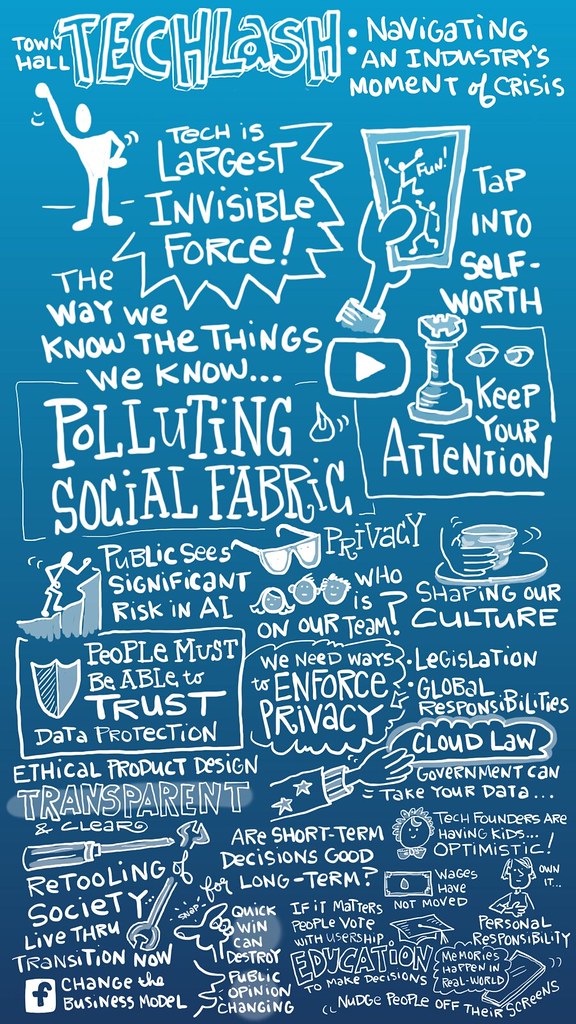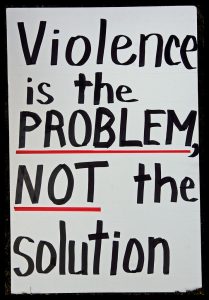
Today’s fast-moving times, with their snowballing benefits and drawbacks, have brought fear and hostility to the convenience of life, and have led to accusations that technology is to blame for a great deal of economic and social harm, and a more general opposition to modern technology itself, especially innovations driven by information technology, a phenomenon know  n as “techno-shock “. Not all of the concerns raised about technology today are frivolous or worthless. But in general, succumbing to technology shocks may reduce individual and social welfare. Despite evidence that the public is more comfortable or even addicted to modern technology than many pundits, activists and politicians who buy such technology-related items and who use social media at record levels – Techlash shows not only an aversion to continued technological innovation, but also an aversion to policies explicitly designed to curb it, but also active support for policies that explicitly aim to do so. “This trend appears to be gaining momentum in some cities and states in Europe and the US, threatening to seriously undermine economic growth, competitiveness and social progress.” (Atkinson,2019)This article will use 3 dimensions to analyse the extent to which people’s organisations, technology companies and governments can do anything to address the fear of technological shocks. There is no doubt that technology shocks are not to be underestimated, whether it is due to concerns about personal jobs and incomes, malicious and inflammatory fears on public platforms, or threats to social stability.
n as “techno-shock “. Not all of the concerns raised about technology today are frivolous or worthless. But in general, succumbing to technology shocks may reduce individual and social welfare. Despite evidence that the public is more comfortable or even addicted to modern technology than many pundits, activists and politicians who buy such technology-related items and who use social media at record levels – Techlash shows not only an aversion to continued technological innovation, but also an aversion to policies explicitly designed to curb it, but also active support for policies that explicitly aim to do so. “This trend appears to be gaining momentum in some cities and states in Europe and the US, threatening to seriously undermine economic growth, competitiveness and social progress.” (Atkinson,2019)This article will use 3 dimensions to analyse the extent to which people’s organisations, technology companies and governments can do anything to address the fear of technological shocks. There is no doubt that technology shocks are not to be underestimated, whether it is due to concerns about personal jobs and incomes, malicious and inflammatory fears on public platforms, or threats to social stability.
The perception by civil society organisations that technological shocks will lead to increased unemployment and income inequality is completely hypothetical. In the face of wishful thinking, many call for a slowing down, or even a braking, of the pace of technological change, the belief that there is a limited amount of work that can be done and that if work is eliminated it will disappear forever, but this is a misinterpretation of the process of technological change because it does not include the second-order effect, whereby savings from increased productivity are recycled into the economy in the form of higher wages, higher profits and lower prices. to create new demand which in turn creates other jobs, with productivity gains leading to more jobs. And it is clear that the problem of income inequality can be easily solved with the support of the state’s anti-trust agencies. In the face of these life issues, concerns remain. “The infringement of ordinary people’s rights by technological shocks should be addressed by groups of people organising to hold companies and governments accountable for the promises they make and to demand that both respect the web as a global community with citizens at its core.” (Tim,2020) The purpose of a people’s organisation is to defend the rights of groups of people. A single match may not light up the whole darkness, but when people come together, the fire will be lit by the crowd, and only when people voice their grievances together will they be taken seriously. This requires an organisation to collect and convey the grievances and concerns of ordinary people to platforms and governments, and demand that they make changes to protect the rights of consumers.

Technology companies also need to strengthen control over their platforms in the face of technological shocks. “All this hatred and violence is fuelled by a handful of internet companies, which are arguably the greatest propaganda machines in history.”(Cohen,2019) Social media and other web applications offer radical groups the potential to recruit followers more easily, and extremism among online hate groups is associated with greater online participation. Major platforms have acknowledged that they can do more to moderate content, such as YouTube’s announcement that it will update its policies to better remove hate and supremacist content. Deletion occurs whenever a user or company’s automated tools flag posts that violate a site’s terms of service and send them to moderators for review before they are removed, a process that will get better over time as platforms develop better tools to automatically identify and remove banned content, and while the internet can facilitate the process of terrorist radicalisation, it will neither accelerate it nor allow radicalisation to occur without physical contact, nor does it support self-radicalisation without contact with others, and technology companies have an indelible credit for creating new codes to maintain the peaceful development of the online world and even the real world.
In the face of the aforementioned disquiet among the general public and the problems faced by technology companies, the government should update and establish more measures to maintain social stability and harmony and to protect the rights of consumers and the institutions involved. Many articles assert that IT is increasingly linked to climate change, claiming that it uses a lot of energy and that the technology industry will consume more and more electricity, thus accelerating climate change. Such hyperbole is clearly a fear of the internet. Recently, “researchers at the Lawrence Berkeley National Laboratory found that as of 2014, US data centres accounted for only 1.8 per cent of US electricity consumption – a figure that has been essentially flat since 2008, despite strong growth in data centre services. ” (Atkinson,2019) The apocalyptic projections focus on the rapid growth of IT use rather than the corresponding improvements in energy efficiency expected, but IT is at the heart of many solutions to reduce fossil fuel consumption and, in addition, technology companies are often at the forefront of the commitment to buy clean energy. The environmental climate concerns are simply overblown at the expense of what technology is really using. Policymakers should resist technological shocks and embrace pragmatic ‘technological realism’ – recognising that technology is a fundamental force for human progress, and that it can also present real challenges that deserve intelligent, thoroughly considered and effective responses. It is the responsibility of governments that are concerned with the people to calm them, to stabilise social order and to ease the pressure on the market, and it is the task of governments that are concerned with the people to respond to the problems, to tackle the so-called difficult problems one by one, to reinforce a layer of protection for the people over the great anxiety created by the impact of technology, to stop people worrying or even panicking about it, and to improve the relevant laws and regulations.
Techlash represents something much broader: a negative reaction not only to a few large technology companies, but to technology itself, and to IT in particular. In fact it is not so much the size and nature of the companies that make them, but rather a reflection of the negative perception of technology itself, which, under the pressure of all the technological shocks, is causing the general public to question and worry about their personal lives, fearing that it will unbalance long-established scales, lead to rising unemployment and widen the gap between rich and poor, while the problems faced by technology companies stem more from the public’s fear of Technology is a double-edged sword “but the advantages clearly outweigh the disadvantages and in order to gain attention, some academics, activists and activists active on various platforms started to create fear and make people question the technology.”(Waal,2019) In the face of such a situation, it is necessary for the government to improve the relevant laws and regulations and to regulate the online environment in order to alleviate people’s anxiety and the pressure on technology companies.“it is likely that what we now understand as the mass media will be gone within 10 years. Vanished, without a trace.”(Dave,2018)
Reference list
•Robert D. Atkinson, D. B. (2019, October 28). A policymaker’s guide to the “Techlash”-what it is and why it’s a threat to growth and progress. A Policymaker’s Guide to the “Techlash”-What It Is and Why It’s a Threat to Growth and Progress. Retrieved October 14, 2021, from https://itif.org/publications/2019/10/28/policymakers-guide-techlash.
•Berners-Lee, Tim (2020) ’30 years on, what’s next #fortheweb’, Available online at https://webfoundation.org/2019/03/web-birthday-30/
•Van Dijck, J., Poell, T. & de Waal, M. (2018) The Platform Society. Oxford: Oxford University Press, pp. 5-32 (‘The Platform Society as a Contested Concept’).
•Karpf, Dave (2018) ’25 Years of WIRED Predictions: Why the Future Never Arrives’, WIRED, 9 October. https://www.wired.com/story/wired25-david-karpf-issues-tech-predictions/
•Sacha Baron Cohen speech to Anti-Defamation League, 2019 https://www.theguardian.com/technology/2019/nov/22/sacha-baron-cohen-facebook-propaganda
•”Techlash” by Fortune Conferences is licensed under CC BY-NC-ND 2.0
•”Violence is the Problem, NOT the Solution” by r.whitlock is licensed under CC BY-NC 2.0